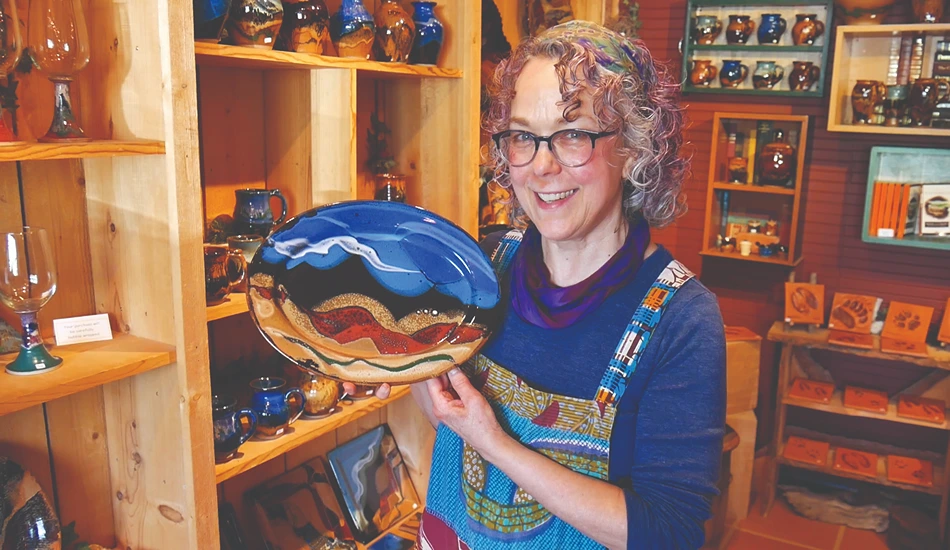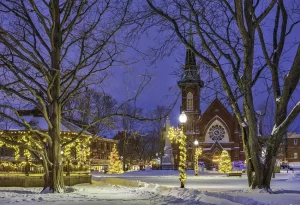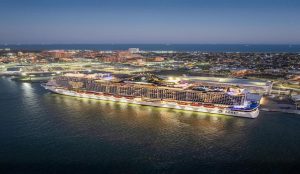3-Day Itinerary for North Dakota’s I-94
Experience the beauty, wonder and diverse landscapes along North Dakota’s Interstate 94. Take in the lush scenery and farmlands of the fertile Red River Valley in the east as you progress westward, where you will witness the terrain gently transform into the soft rolling hills of the state’s central region, offering jaw-dropping views at every turn. Traverse the rugged and untamed Badlands of the western part of the state as you bring your journey to a close, awestruck by the towering rock formations and ethereal landscapes.
As you travel Interstate 94, you will have plenty of opportunities to explore North Dakota’s unique attractions and experience numerous recreational activities, all easily accessible from the interstate.

Screenshot
Enjoy These North Dakota Attractions and More:
- Downtown Fargo’s iconic vintage Fargo Theatre
- Go back in time at Bonanzaville’s 12-acre 45-building restored pioneer village
- Have fun at the Fargo Air Museum with interactive displays
- Explore the local history with Valley City’s Historic Bridges Tour
- Drive down Sheyenne River Valley national scenic byway
- Walk through Jamestown’s Frontier Village and see the world’s largest buffalo
- Explore the 977-acre Fort Abraham Lincoln State Park on the banks of the Missouri River
- Have a pitchfork steak fondue lunch at the Tjaden Center on the bluffs overlooking Medora
- And so much more!
Get More Information on Route I-94 in North Dakota and Subscribe for FREE
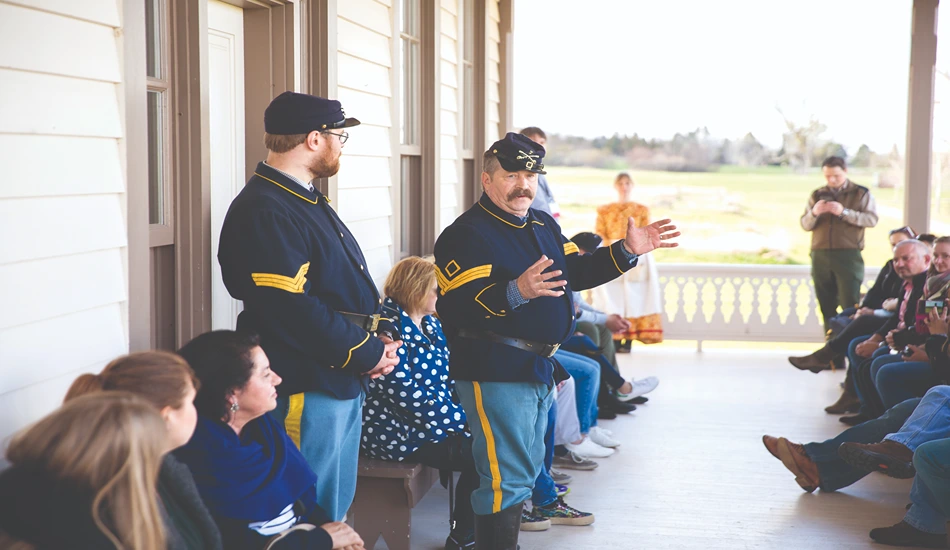
North Dakota’s Interstate 94 DAY-TO-DAY ITINERARY
DAY 1 – FARGO-WEST FARGO-MOORHEAD AREA, ND
Start your west-bound journey in Downtown Fargo, a must-see when visiting the area. It’s home to the iconic Fargo Theatre (yes, the one with the marquee you see in all the photos) along with other downtown attractions, dozens of trendy eateries and quirky boutiques. The Fargo Theatre is a vintage movie palace built in 1926 to showcase its Wurlitzer pipe organ and its modern art décor.
Hop back in your car and drive to West Fargo to Bonanzaville, a beautifully restored 45-building pioneer village set on 12 acres. Visitors can go back in time and experience the rich history of this magical place, including over 400,000 artifacts showcased throughout the sod house, museums, newspaper office, schoolhouse, hotel, church and drug store.
Next, stop inside the Fargo-Moorhead Visitors Center off Exit 348 and get your picture taken with the original Fargo Woodchipper from the famous Coen brothers’ cult classic film Fargo. After getting your picture taken with the Woodchipper, head over to the Fargo Air Museum, home to two airplane hangars full of aircraft and interactive displays to entertain aviation fans of all ages. The air museum is a must-see if you love history, aircrafts or both.
Start bringing your first day to a close in Valley City with a few attractions to round out your experience. Walk through the area’s railroad history at Rosebud Visitor Center where you will find an 1881 Superintendent’s Railcar with the original furnishings, along with history of the Sheyenne Valley.
From the visitor’s center, enjoy Valley City’s Historic Bridges Tour featuring eight unique bridges. Valley City was founded in 1872 and is built around the winding Sheyenne River and is home to the Hi-Line Bridge, one of the longest and highest bridges at 126 feet located on the former Northern Pacific Railway.
End your first day on North Dakota’s Interstate 94 by travelling along the Sheyenne River Valley National Scenic Byway situated 63 miles from Lake Ashtabula, north of Valley City, south of Lisbon along the Barnes County Highway 21. This is a nationally recognized scenic byway through an area known for its flat, endless horizon. The tree-speckled valley of the Sheyenne, with snaking river and winding roadway, is a welcome change on your trip.
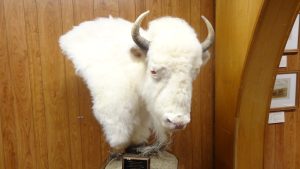
National Buffalo Museum. Photo courtesy of Martin Lewison via Flickr
DAY 2 – JAMESTOWN & BISMARCK-MANDAN AREA
Begin your second day in Jamestown at the Frontier Village, home to a 60-ton concrete buffalo, a buffalo herd and a pioneer village. Next, head over to the North American Bison Discovery Center with a museum that houses artifacts, many original art works, and an observation point for watching the live buffalo herd.
As you continue trekking west, take a rest at Fort Seward. The well-kept grounds feature an interpretive center and the largest United States flag on display in North Dakota (weather permitting). Fort Seward was in operation from 1872 to 1877.
Head out of Jamestown and continue west to the Bismarck-Mandan area and stop at Fort Abraham Lincoln State Park. This 977-acre park is located on the banks of Missouri River south of Mandan. The area’s rich history goes back more than 300 years when it was home to the Mandan Indians. It was the site of a military garrison in the mid-to-late 1800s and now features exhibits related to the life of the Mandan Indians and the military history of the fort that was home to Custer and the 7th Cavalry.
This area also features On-a-Slant Indian Village, which is adjacent to Fort Abraham Lincoln and was once home to a thriving Mandan Indian population. Here you can tour reconstructed earth lodges.
Take a tour of the Custer House, original home of General George and Libbie Custer with beautifully reconstructed commissary storehouse, granary, barracks and stables. After going back in time, head over to the North Dakota Capitol Building, a 19-story architectural beauty built in the early 1930s with an observation deck on the 18th floor.
Before leaving the area, visit the North Dakota Heritage Center, home to one of the largest collections of Plains Indian artifacts. There are also numerous displays of North Dakota’s varied military and agricultural history here. North Dakota’s largest museum features four beautiful galleries tracing the state’s rich history from its earliest geologic formation 600 million years ago to today. The quaint museum gift shop offers North Dakota arts and crafts.
End your day enjoying a beautiful sunset on the Lewis and Clark Riverboat, a 100-foot paddle-wheeler featuring twin decks and a 70-foot cabin that can carry more than 120 people. The riverboat departs in the afternoon and offers dinner and sunset cruises on the Missouri River.
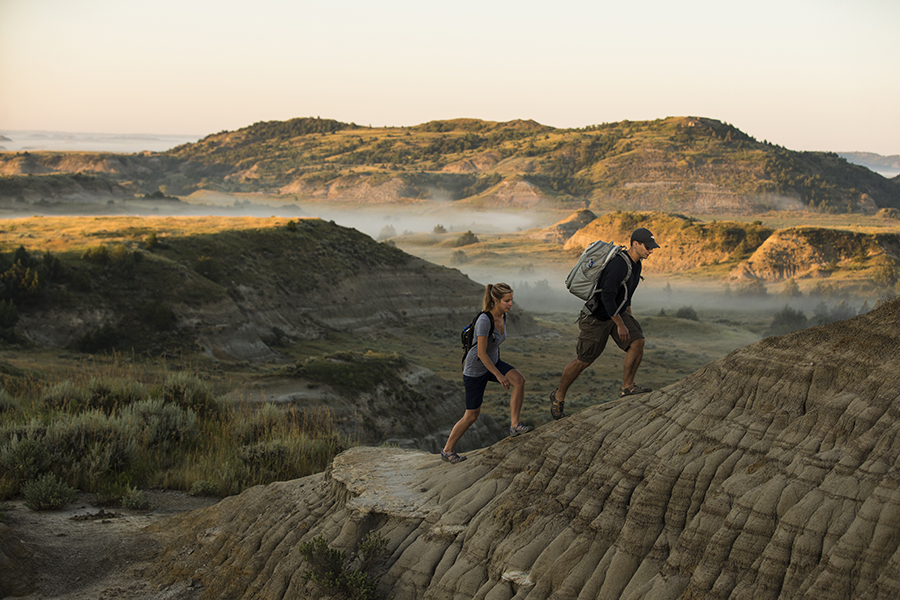
Credit North Dakota Tourism
DAY 3 – NEW SALEM, GLADSTONE, DICKINSON, MEDORA AREAS
Start your third day bright and early in New Salem at Salem Sue, the world’s largest Holstein cow made of fiberglass. This enormous roadside attraction is visible for miles and stands 38 feet high and 50 feet long on top of School Hill on the north edge of New Salem.
Once you’ve taken enough pictures with Salem Sue, drive west towards Gladstone along the 32-mile long Enchanted Highway, which features some of the world’s largest scrap metal sculptures. Seven different sculptures line the county highway, each one beautiful and unique. The sculpture “Geese in Flight” is currently listed in the Guinness World Book of Records as the Largest Scrap Metal Sculpture in the entire world.
Leave Gladstone and make your way to the town of Dickinson where you can visit the Badlands Dinosaur Museum located at the Dickinson Museum Center. The 13,400-square-foot museum houses thousands of rocks, mineral and fossil specimens from around the world, including a complete Triceratops skull discovered just west of Dickinson. Fourteen full-scale dinosaurs and a fluorescent mineral display may just be the highlight of your vacation.
After a mesmerizing display at the museum, take a drive over to the Fluffy Fields Vineyard and Winery. This family-owned and operated farm and winery features grapes and fruit grown in their own vineyards, orchards and gardens. Along with their delicious wine and other beverages, a careful selection of light food is served to pair with the wines, creating a relaxing and delightful experience.
After getting your fill of tasty wine and food, head over to Medora, a town that still maintains the charms of the “old” days, sharing them with thousands of visitors each year. Its quaint downtown area offers shopping, touring, eating and stagecoach rides. Medora is the gateway to the south unit of Theodore Roosevelt National Park and home of the Medora Musical and world-famous Bully Pulpit Golf Course. This Old West cow town was founded in 1883 by the Marquis de Mores and named for his beloved wife.
Next, visit the Chateau de Mores State Historic Site, a 26-room, two-story frame building built in 1883 as the summer residence of the Marquis family. The chateau is now a historic house museum and contains many of the original furnishings and personal effects of the de Mores family. Visits through the house are available during the summer months.
Quench your thirst and satiate your appetite at the Tjaden Center on the bluffs overlooking Medora with a unique western steak meal, the pitchfork steak fondue. After your meal visit the spectacular Burning Hills Amphitheater and see the Medora Musical, a colorful and delightful production. Western entertainment and a patriotic salute are part of each Broadway-style variety show.
Wind down the last day of your trip by visiting the south unit of the Theodore Roosevelt National Park. North Dakota Badlands provide the beautiful scenic backdrop to this park. Named for the 26th president, it memorializes his contribution to conservation. A Visitor’s Center and Theodore Roosevelt’s cabin from the Maltese Cross Ranch are featured at the entrance. Take a scenic drive through the park and catch a glimpse of the myriad native wildlife, including buffalo, deer, elk, big-horn sheep, wild horses, mule deer, and prairie dog towns. Feeling extra adventurous? Take a canoe through the park on the Little Missouri River.
End your trip shopping on Main Street at the Prairie Fire Pottery shop, a small, burnt red building that houses a studio and showroom of North Dakota potter Tama Smith. Smith’s creations are prized by collectors and pottery enthusiasts for their rich and vibrant glaze colors reminiscent of the western North Dakota landscape.
North Dakota has much for travelers and families to experience, so be sure to Subscribe to Leisure Group Travel for FREE and Download the Full June Edition of Leisure Group Travel to get even more travel ideas and tips.


